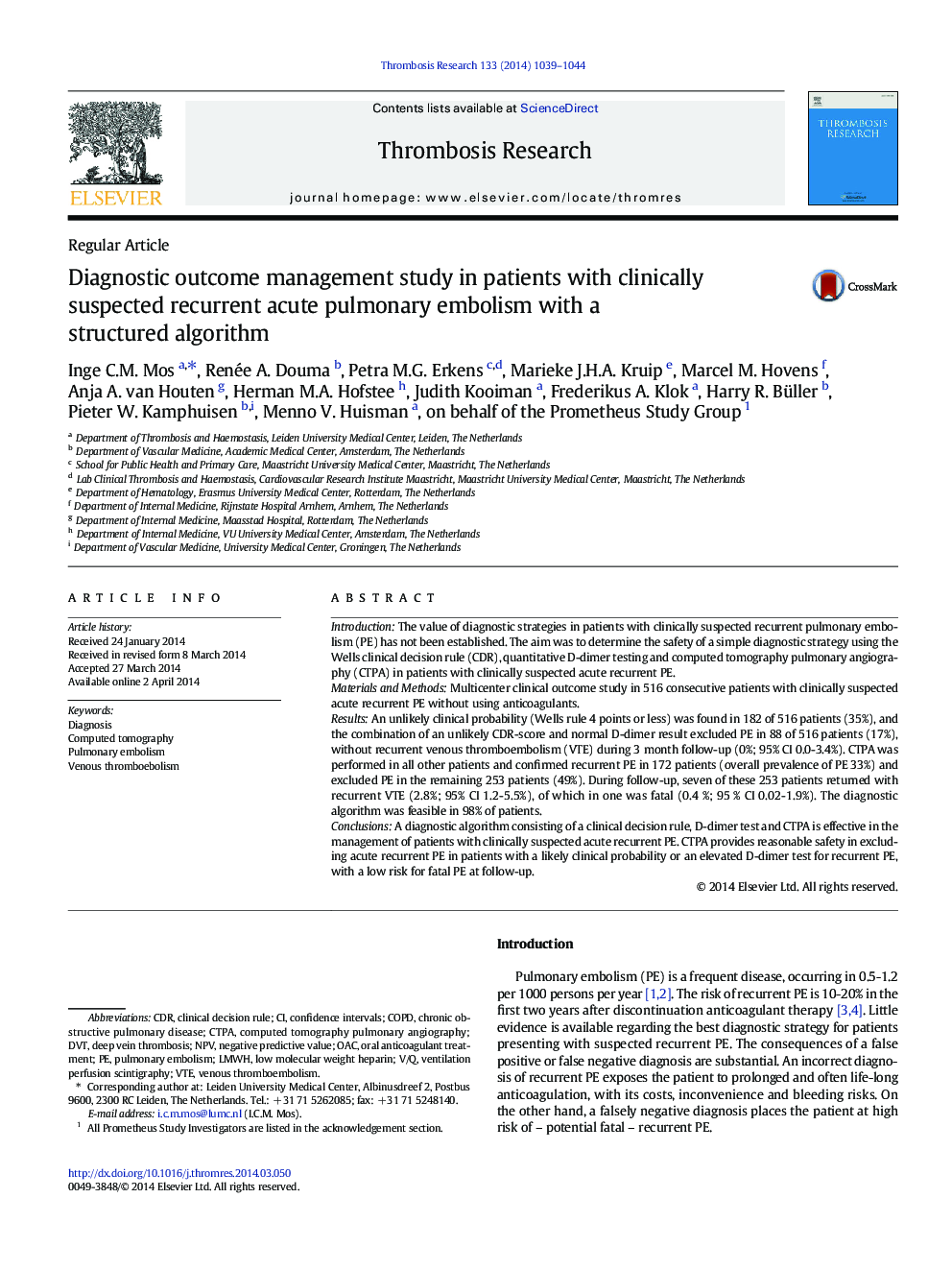| Article ID | Journal | Published Year | Pages | File Type |
|---|---|---|---|---|
| 6002486 | Thrombosis Research | 2014 | 6 Pages |
IntroductionThe value of diagnostic strategies in patients with clinically suspected recurrent pulmonary embolism (PE) has not been established. The aim was to determine the safety of a simple diagnostic strategy using the Wells clinical decision rule (CDR), quantitative D-dimer testing and computed tomography pulmonary angiography (CTPA) in patients with clinically suspected acute recurrent PE.Materials and MethodsMulticenter clinical outcome study in 516 consecutive patients with clinically suspected acute recurrent PE without using anticoagulants.ResultsAn unlikely clinical probability (Wells rule 4 points or less) was found in 182 of 516 patients (35%), and the combination of an unlikely CDR-score and normal D-dimer result excluded PE in 88 of 516 patients (17%), without recurrent venous thromboembolism (VTE) during 3Â month follow-up (0%; 95% CI 0.0-3.4%). CTPA was performed in all other patients and confirmed recurrent PE in 172 patients (overall prevalence of PE 33%) and excluded PE in the remaining 253 patients (49%). During follow-up, seven of these 253 patients returned with recurrent VTE (2.8%; 95% CI 1.2-5.5%), of which in one was fatal (0.4 %; 95 % CI 0.02-1.9%). The diagnostic algorithm was feasible in 98% of patients.ConclusionsA diagnostic algorithm consisting of a clinical decision rule, D-dimer test and CTPA is effective in the management of patients with clinically suspected acute recurrent PE. CTPA provides reasonable safety in excluding acute recurrent PE in patients with a likely clinical probability or an elevated D-dimer test for recurrent PE, with a low risk for fatal PE at follow-up.
